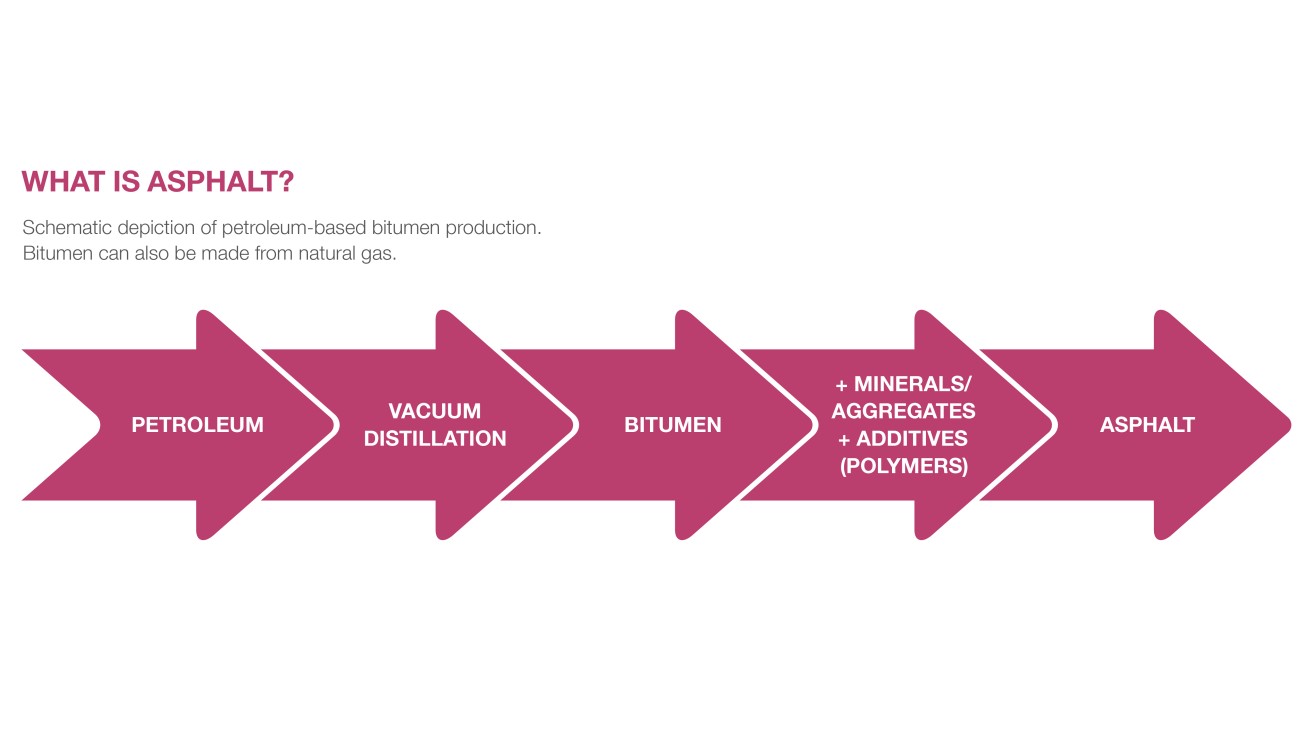
Bituminous coatings
Mar 01, 2019 Read time: approx. MinutesMinute
A better barrier
With VINNEVA®, WACKER is launching a new product line for polymer-modified bitumen emulsions. The VAE polymers ensure that coatings adhere exceptionally well to the building fabric for a long time and offer better protection from the ingress of water.
Bitumen can be found virtually everywhere. We walk on it every day – it is the binder in asphalt. A bitumen coating can protect basement walls, for instance, from the ingress of water. Even in ancient times, bitumen served to seal flat roofs – such structures were used in the Hanging Gardens of Babylon, one of the Seven Wonders of the World, for example.
Today, bitumen is no longer obtained as a mineral pitch from wells as it was in ancient Babylon, but is rather found in refineries as a residue in the vacuum distillation of petroleum. In Europe and North America, this dark, semisolid, high-molecular mixture of different hydrocarbons is usually modified with polymers that enhance its property profile.
In other regions of the world, bituminous substances are still predominantly used without polymeric additives. Nevertheless, the market for polymer-modified bitumen is growing. According to a study by Global Market Insights, the sector generated sales totaling some US$9.5 billion in 2016. Market researchers are expecting average annual growth rates of 4% until 2024.
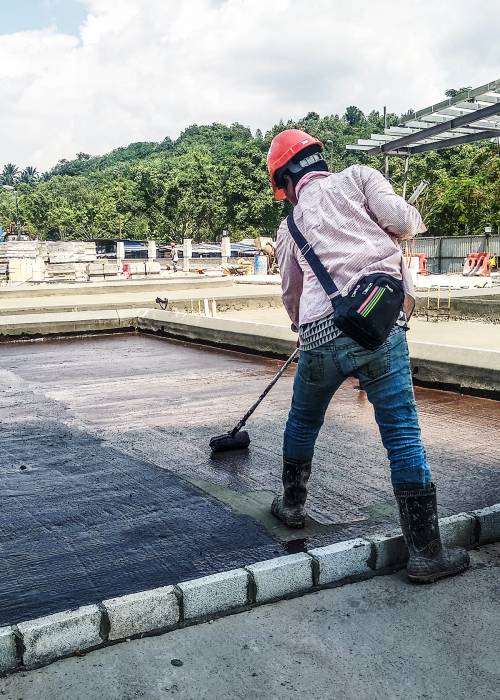
Bitumen coatings protect floor panels and flat roofs from the ingress of water.
Custom-designed building protection

WACKER has developed binders based on vinyl acetate-ethylene (VAE) copolymers specifically for bitumen emulsions and is marketing them under its VINNEVA® trade name. On the one hand, the product line is intended to convince users of non-modified bitumen emulsions of the benefits of a polymer additive – this makes the coatings more flexible and more resistant to all kinds of mechanical stress. On the other hand, VINNEVA® offers several advantages over competitor products that have been used in bitumen emulsions to date. These are mainly elastomers, i.e. rubber-like substances, such as styrene-butadiene rubber (SBR) and polychloroprenes.
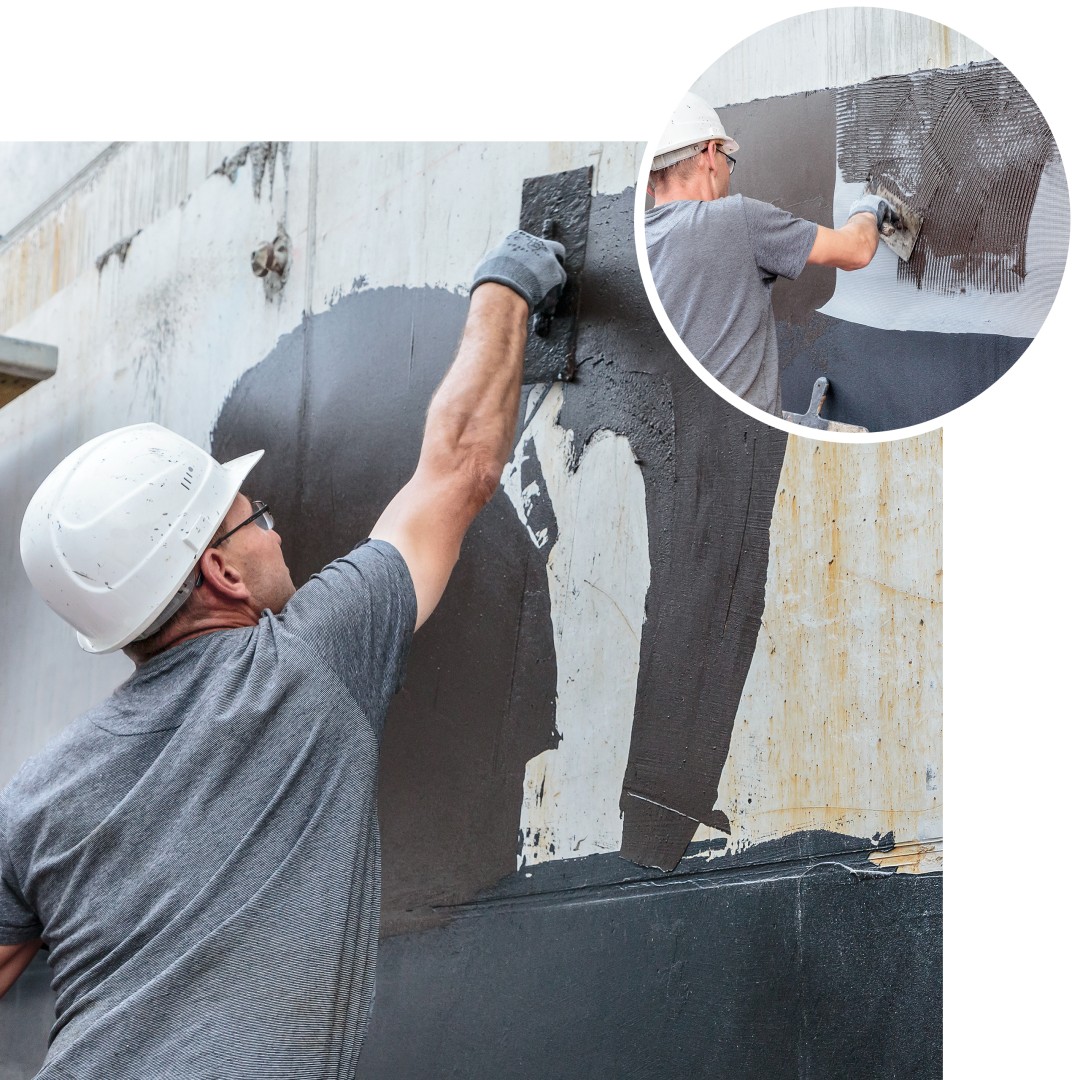
Builders use polymer-modified bitumen to seal basement walls watertight.
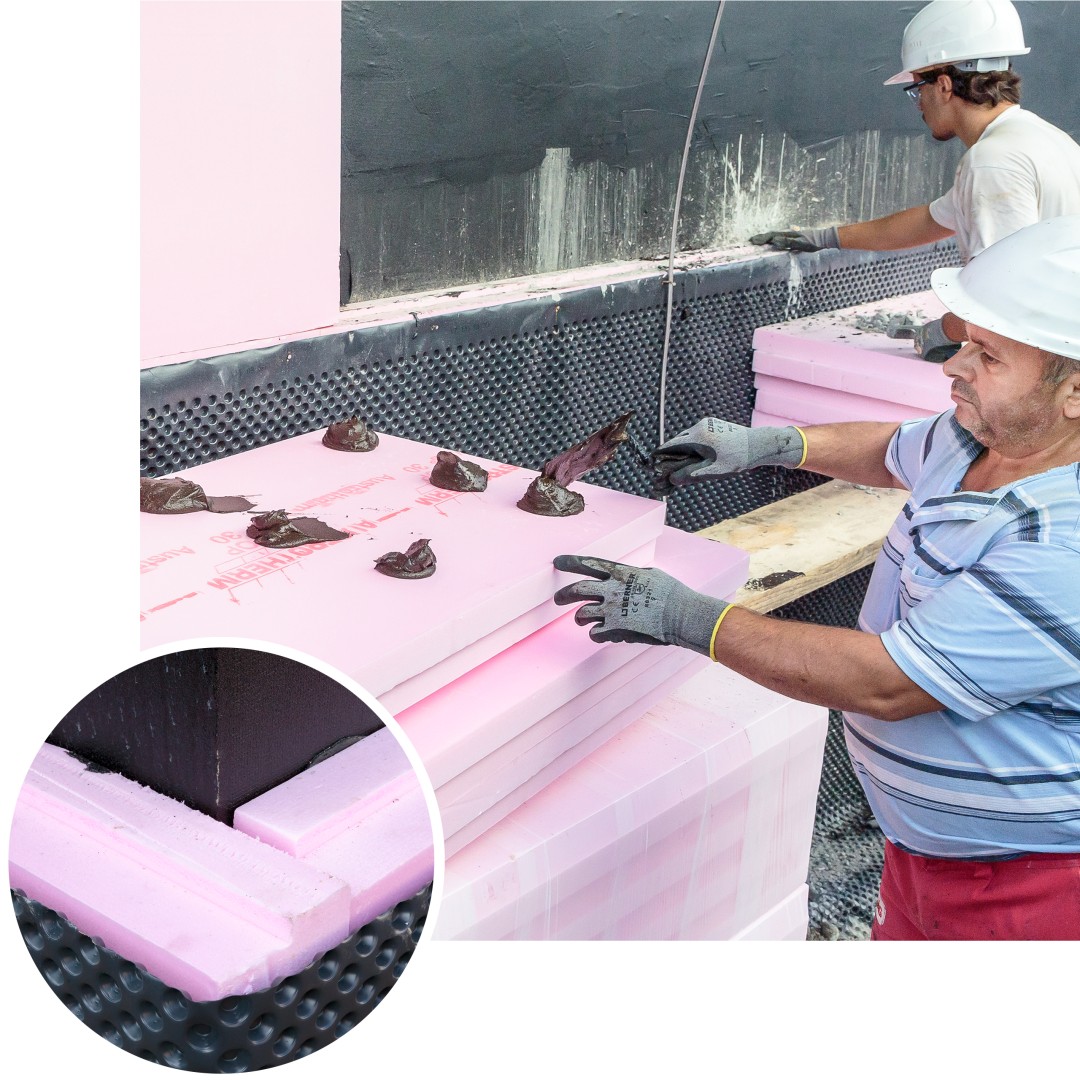
This kind of perimeter insulation, which includes the floor panel, stops damp from forming in the basement and prevents a house from cooling down from below.
Excellent adhesion
“A content of several percent of VINNEVA® – depending on the formulation – is enough to increase the performance of bitumen tremendously and advance it to the Champions League of water-repellent building coatings, so to speak,” emphasizes Dr. Markus Busold, head of Strategic Marketing for Consumer & Industrial Polymers at WACKER. He explained that VINNEVA® modified formulations outperform other modified bitumen emulsions, especially when it comes to tensile adhesion strength and their barrier effect against water. Extensive tests at WACKER’s applications laboratories have shown that the tensile adhesion strength increases by up to 60% compared to conventionally modified bitumen emulsions.
In order to test tensile adhesion strength, the lab team first applies the bitumen emulsion to a concrete slab. Once it has dried, they cut circular test areas into the coated slab, sticking a metal test piece onto each one of these areas. They then measure the force required to peel off the test pieces, including the bitumen coating sticking to them, from the concrete. The higher the necessary force, the more difficult it is to detach the coatings from the building fabric, i.e. the stronger their adhesion to it.
More resistance to water pressure
A bitumen coating’s most important function is to protect basements, roofs or entire buildings from the ingress of water. To test how well a coating fulfills this function, WACKER technicians apply it to small concrete cubes and allow it to dry under defined climatic conditions. In a special facility, they then expose the coated cubes to an adjustable water pressure for 24 hours, for instance. After this time, they measure whether any of the originally used water has been “lost” due to ingress into the concrete cube. “Our tests have demonstrated that bitumen emulsions that have VINNEVA® added to them can withstand higher pressure than coatings modified with conventional polymers,” explains Busold.
There are further properties that characterize VINNEVA® modified bitumen emulsions. A sample formulation took 3.5 hours to dry, for example. When the VINNEVA® component was replaced with another additive – with the formulation otherwise the same – the drying process took 4.5 hours. What’s more, the dried coatings based on the new polymer are less sticky than various other systems. In many cases, shorter drying times represent increased productivity for end customers, which can lead to cost savings in applying the bitumen emulsion.
“An amount of several percent of VINNEVA® is enough to increase the performance of bitumen tremendously and advance it to the Champions League of water-repellent building coatings, so to speak.”
Dr. Markus Busold, Senior Manager, Strategic Marketing for Consumer & Industrial Polymers

Thanks to polymer modification, tensile adhesion strength rose by as much as 60% compared to conventional bitumen emulsions.

Tests being performed at WACKER’s applications laboratories. Low-temperature flexibility is tested in a climatic chamber.

Examining crack-bridging. When exposed to stress, the polymer-modified bitumen emulsion has to endure cracks in the concrete substrate.
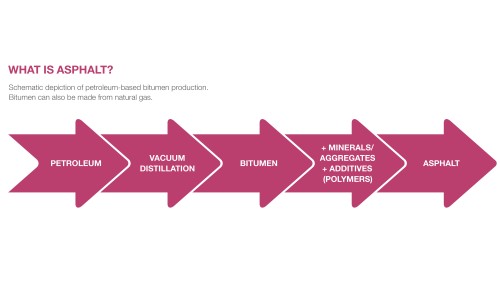
The best known and most common use of bitumen is as asphalt in road surfacing. For this purpose, residue from the distillation of petroleum (in very rare cases, natural gas) is processed with aggregates and polymeric additives under pressure and with exposure to heat.
Two approaches to modification
It must always be taken into account that the properties of a bitumen emulsion do not just depend on the polymers used, but also on the bitumen composition and other additives. Bitumen is a mixture of heterocycles, polycyclic aromatic hydrocarbons, and branched hydrocarbons with varying degrees of saturation. Depending on where the crude oil is sourced, the proportion of these compounds in bitumen varies greatly.
Coatings are based on bitumen emulsions that can be produced in colloid mills from hot bitumen and water that contains additives. There are two ways of modifying bitumen coatings with a VINNEVA® polymer: the polymer is either added to the water jet before the emulsion forms or to the bitumen emulsion at the end.
This is why, for its customers, WACKER individually tailors its VINNEVA® polymers to the bitumen composition and additives. Experts at the Group’s application technology centers, which are located in all key markets, provide support here. Thanks to this local presence, it is possible to formulate coatings that are superior to products based on other polymers with regard to key properties such as elasticity, elongation at break and watertightness.
VINNEVA® polymers are not only based on petroleum, but also on natural gas. “Thanks to this diversified raw-material base, their price fluctuates less in the long term than that of other polymers used for bitumen modification,” says Busold. In addition, unlike some other additives, they do not contain chlorine.
VINNEVA® polymers can also enhance fiber-reinforced or filled bitumen coatings. Plus, the polymers are ideal for optimizing two-component systems, which are particularly popular in Europe. These consist of a liquid component – the polymer-modified bitumen emulsion – and a powder-form component made of cement and fillers. They can be applied in particularly thick layers.

Most of the bitumen left after the distillation of petroleum is used as asphalt in road construction.
Contact
For more information on this topic, please contact:
Mr. Dr. Markus Busold
Senior Manager of Strategic Marketing
Consumer & Industrial Polymers
+49 89 6279-1575
markus.busold@wacker.com

